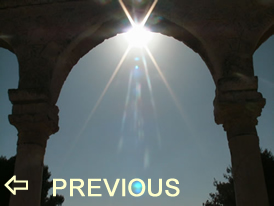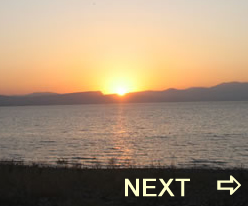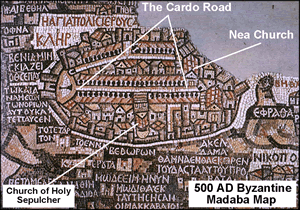|
|
|
 A Bible Teaching Ministry of Galyn Wiemers A Bible Teaching Ministry of Galyn Wiemers
|
|
|

|
| |

|
September 7 - Morning
"The words of Amos, one of the shepherds of Tekoa —the vision he saw concerning Israel two years before the earthquake, when Uzziah was king of Judah and Jeroboam son of Jehoash was king of Israel."
- Amos 1:1
|
 |
|
| Amos: Shepherd, Arborist, Herdsman and Prophet |
|
|
Amos was not a professional prophet or from the priestly tribe of Levi. Even in chapter 7:14
Amos protests boldly that he is not professionally or genetically associated with the prophets
when he rebukes one of the priest for rejecting him and his words from God. Amos confronts
Amaziah the priest by saying:
“I was neither a prophet nor a prophet’s son, but I was a shepherd, and I also took care of sycamore-fig trees. But the Lord took me from tending the flock and said to me,
‘Go, prophesy to my people Israel.’ Now then, hear the word of the Lord.”
The word for “shepherd” used in Amos 1:1 is not simply the word roeh which refers to someone
hired to watch the sheep. It is the plural of the word noqed (noqedim) which is a word also used
in 2 Kings 3:4 in reference to breeding sheep. In 7:14 Amos also calls himself
a boqer or “herdsman.” In addition to this Amos added that he was “a dresser of sycamore trees. This involved piercing the figs to help them grow and scraping the figs to help resist insects. Amos was used to hard work and he had a variety of farming skills which he used for seasonal work at several locations in Judah.
Amos was from Tekoa which is 10 miles south of Jerusalem, 5 miles south of Bethlehem in the Judean Hill country with the Desert of Tekoa immediately to the east. God sent Amos from
Judah to prophecy to the northern land of Israel in the city of Bethel. There Amos warned the
leaders and the priests between the years 760-750 BC of the coming Assyrian dispersion if Israel didn’t repent. The professional priests and professional prophets (which was the only kind they
appear to be familiar with) rejected Amos and told him to go back to Judah to make his living
as a prophet there. They said:
“Get out, you seer! Go back to the land of Judah. Earn your bread there and do your prophesying there. Don’t’ prophesy anymore at Bethel, because this is the king’s sanctuary and the temple of the kingdom.” (Amos 7:12-13)
The professional prophets and priests in Bethel clearly could not discern between the reality
of being called and gifted in order to serve a nation with merely being educated and trained
in order to be employed in a nation.
The professional prophets and priests were employed by Israel’s King and worked for the people
of the land. They did not appreciate Amos speaking against the system that employed them.
Of course, Amos was in a sense, employed by someone greater than the king of Bethel.
He was working for a greater King from an enduring kingdom. Of course, the priests of Bethel
could not tolerate the words of Amos; just like the Great King that Amos served could not
tolerate the words and practices of Bethel. So, in 722 BC, Amos’ King, the Lord God,
destroyed Bethel with the Assyrian troops. He utterly wiped out the priests and the prophets
who had boldly served the worldly system of Bethel. Today we read and study the book of
Amos, but, in contrast, the only words of the Bethel priests and prophets we have available
are the ones that Amos incidentally recorded in his book. |
|
 |
“Today, few Americans are aware of the spiritual epidemic that wiped out the land of our Christian forefathers. Even fewer are aware that the same epidemic has reached our own shores, spreading like a virus.” – Ken Ham
|
 |
| At death, in Bible times, an attending person would shout out a loud wail to announce death had occurred. Others would follow with a sharp, shrill shriek known as the death wail. This continued along with laments expressing love and sorrow until burial the same day. |
|
| |
|
|
| |
|
 |
 |
 |
 |
| Home |
Financial Support and Responsible Spending |
Scientists and Theologians
|
Mozambique - natural disasters, dependency, disease
(World box for update) |
|
|
| |
 |
 |
 |
 |
The Arch of Titus, located in Rome southeast of the Roman Forum, commemorates Titus' victory over the Jews and the end of the 66-70 AD Jewish revolt. This triumphal arch was built in 82 AD. The modern importance of this arch is in the engraving found on the inside which shows the Temple treasures being carried into Rome by Roman soldiers after their destruction of the Temple and the city of Jerusalem in 70 AD. The image clearly shows the golden Table of Showbread, the golden Candle Stand, and the trumpets used by the priests. Many other items from the Temple can also be assumed to have made it to Rome. It seems these Temple treasures were taken from Rome by the Vandals but recaptured by the Romans of the Byzantine Empire and taken to Constantinople. The Temple treasures portrayed on the Arch of Titus may have ended up stored in the Nea Church by Justinian.
(Photo by Bill Wallander) (click on image for larger size) |
The Madaba map from the 500's AD shows the main Roman road called the Cardo with the most important Christian churches in relation to the Cardo. The Church of the Holy Sepulcher is shown with its basilica built in front of Calvary so that it extends all the way to the Cardo. Also, shown on the map are the Nea Church, the Siloam Church and the Zion Church. On Easter each year during the Byzantine era, a very large procession began at the Nea Church and progressed down the Cardo Street to the Church of the Holy Sepulcher.
(click on image for larger size) |
| |
|
| Details and Explanation of Sets & Reps Devotional System Here |
 |
|
|
| |
| |
| |
| Reps & Sets is a daily Bible devotional for Christians from Generation Word Bible Teaching used each morning and evening. |
| |
|
|